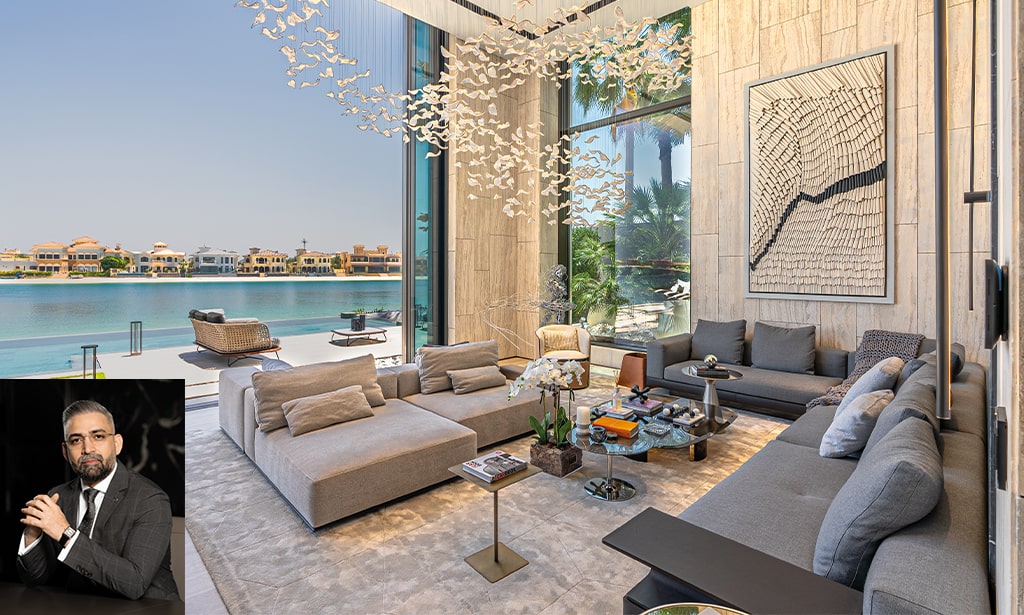
Founder & Principal of Design Intervention
What is biophilic design and why is it so important today?
For 99% of human history, we lived immersed in nature, surrounded by dynamic light, earthy textures, natural sounds, and rich sensory cues that shaped our biology.
Although our environments have drastically changed, our physiology hasn’t. Our brains and bodies are still wired to respond to these natural stimuli, even at an unconscious level, driving everything from heart rate and stress levels to sleep and cognitive function. Today, most of us spend 90-95% of our time indoors, in environments that are static, uniform, and often sterile. Biophilic design addresses this disconnect by recreating the multisensory richness of nature – through light, textures, sounds, and even scents – so our homes and workplaces can support rather than undermine our well-being.
What are the patterns and principles of biophilic design, and what benefits does it offer to the built environment?
Biophilic design is guided by patterns that reflect the dynamic complexity of nature, including fractals, organic shapes, and the interplay of light and shadow.
Crucially, it’s multisensory – engaging sight, sound, touch, and even smell to create congruent stimuli that align with the way our brains process the natural world.
For example, textures like wood or stone feel grounding, natural sounds reduce stress hormones, and varying light intensity mirrors the rhythms of the day. These principles foster environments that feel alive and restorative. They reduce stress, improve cognitive performance, enhance sleep quality and lower the risk of chronic diseases. Biophilic design also creates a sense of harmony and connection that is deeply rooted in our evolutionary history, offering benefits that go far beyond aesthetics.
How can biophilic design be effectively applied to indoor spaces? What are the key aspects of designing with a focus on human wellbeing?
To apply biophilic design effectively, it’s essential to move beyond just adding plants or nature-inspired visuals. The key is to create an immersive, multisensory experience that aligns with our biological needs. This means:
• Light: Incorporate natural light that changes throughout the day, using skylights, mirrors, or dynamic artificial lighting.
• Texture: Use materials like wood, stone, or wool that engage the sense of touch.
• Sound: Integrate calming natural soundscapes, like flowing water or bird song, to mask urban noise.
• Scent: Introduce natural aromas, such as lavender for relaxation or citrus for energy.
• Airflow: Ensure good ventilation to mimic the refreshing quality of outdoor air.
Designing for congruent stimuli is critical. When the elements of a space work together – for instance, when natural textures are complemented by soothing sounds and warm light – it creates a harmonious environment that supports rest, focus, and emotional resilience.
Why is it important to apply biophilic principles to our homes? How does natural light enhance the quality of indoor spaces?
Our homes are where we rest, heal, and recharge, yet modern homes often sever us from the natural rhythms our biology depends on. Biophilic principles are essential for creating environments that align with the way humans evolved, immersed in dynamic, sensory-rich natural settings.
Natural light, for example, is a cornerstone of health. It regulates circadian rhythms, which control sleep, mood, and hormones like melatonin and cortisol. Morning light, rich in blue wavelengths, helps us wake up, while evening light prepares the body for rest. However, natural light is more than just a visual cue, it affects our physiology at an unconscious level, influencing energy levels, immune function, and even mental clarity. Homes that maximise natural light, through well-placed windows or reflective surfaces, feel more alive and energising because they align with these deep biological needs.
What is biophilic lighting, and what positive effects does it have on both physical and mental wellbeing?
Biophilic lighting mirrors the qualities of natural light, dynamically shifting in intensity and colour temperature throughout the day.
This is essential because light is a powerful driver of our biology. For millions of years, our ancestors relied on changing light to signal when to wake, rest, or be active. Even today, artificial light can’t replace the impact of natural light on our physiology.
For instance:
• Bright, cool light in the morning energises and improves focus by boosting serotonin.
• Warm, dim light in the evening promotes relaxation and sleep by triggering melatonin production.
Biophilic lighting doesn’t just meet visual needs – it works with our circadian rhythms to enhance sleep, mood, and even hormonal balance. By reducing the strain of static, harsh artificial lighting, it creates spaces that feel harmonious and restorative, supporting both physical and mental health.








